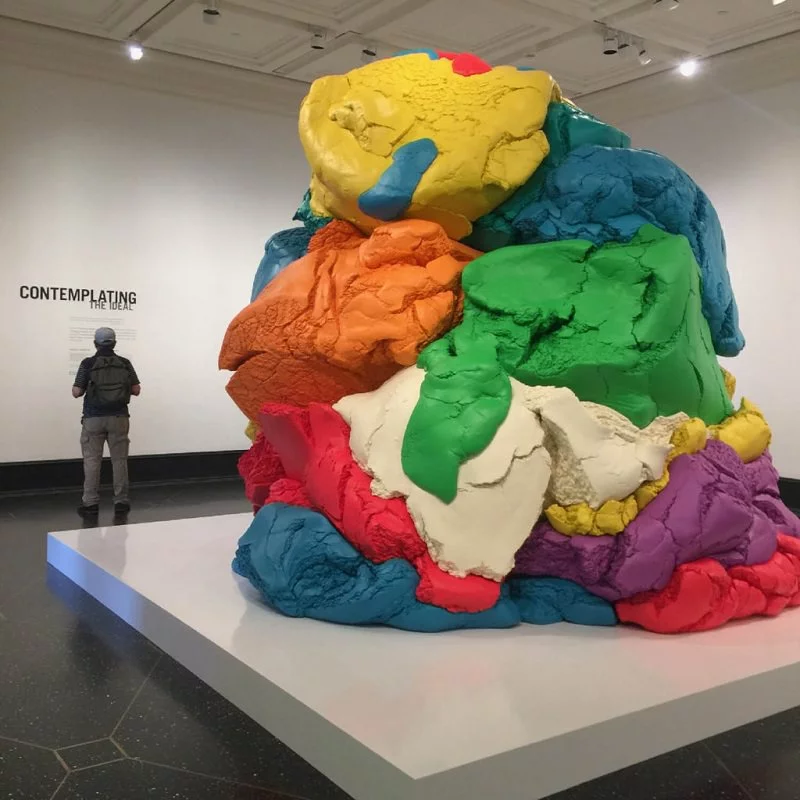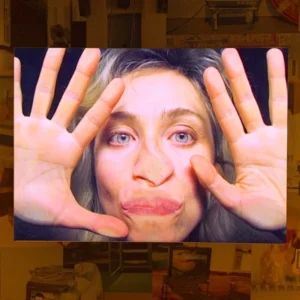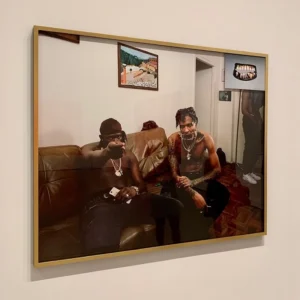So, what is Contemporary Art? What is the difference between Contemporary and Modern Art? Who are the top contemporary artists and famous modern painters? In general, which artists and art can we classify under the “Contemporary” descriptor?
Many people, from avid art enthusiasts to newcomers in the art world, have these questions. When we encounter highly conceptual art, abstract art, or works of art that appear unorthodox, it becomes inaccessible for everyone to engage with. This article is designed to break down some of the bigger distinctions of Contemporary Art to help the art world be more approachable for everyone.
What Does Contemporary Art Mean Exactly?
Is it called Contemporary Art because Modern Art was already taken? Not exactly. Contemporary Art, which is considered any art from the 1960s through the present, was named such because it was considered art of the current moment. While this means the art is being made presently, it also reflects artists tackling relevant issues facing society; we see an emergence of what became known as Conceptual Art.
We witness this with political artists, such as the renowned Ai Weiwei. Weiwei consistently challenges the Chinese government with immersive installation works such as “Sunflower Seeds” which consisted of millions of handcrafted porcelain sunflower seeds to challenge the forced uniformity of the communist regime.
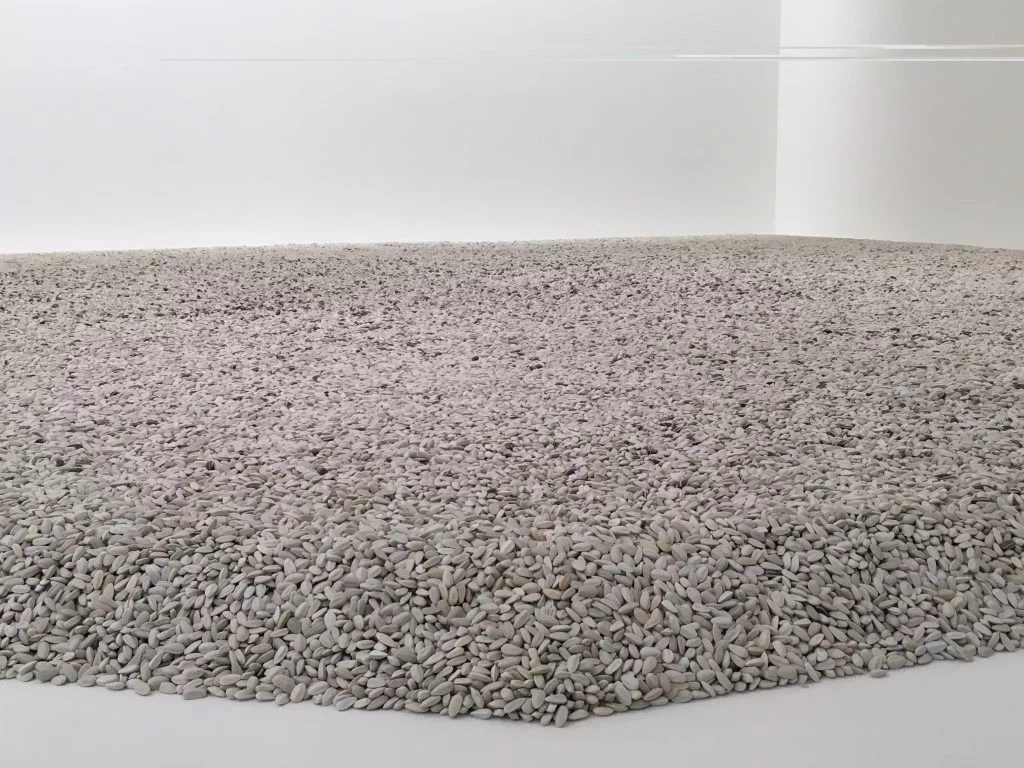
Then, artists like Nick Cave tackle the social issues of our time. Cave is a contemporary African- American interdisciplinary artist who creates wearable sculptures, called “Soundsuits”, that create a commentary on race, gender, and identity in the present day.
Others explore their heritage and cultural identities. Ana Mendieta explored these ideas through her performative silhouettes in the landscape, ‘Untitled: silueta series’. Here, she investigated her own identity as a woman and elements of her Cuban background.
And then, we see artists who intersect these issues. Doris Salcedo, a Columbian activist artist, uses sculpture and performance to explore notions of identity in response to the violent political, social, and cultural confines of her country. Salcedo is known for incorporating witness statements, animal organs, and discarded furniture to expose the suppressed stories of her countrymen.
Contemporary art works closely with the materials of the present day. Artists in the early decades began adapting things such as newly designed plastics up through today with the use of computers and gaming technologies.
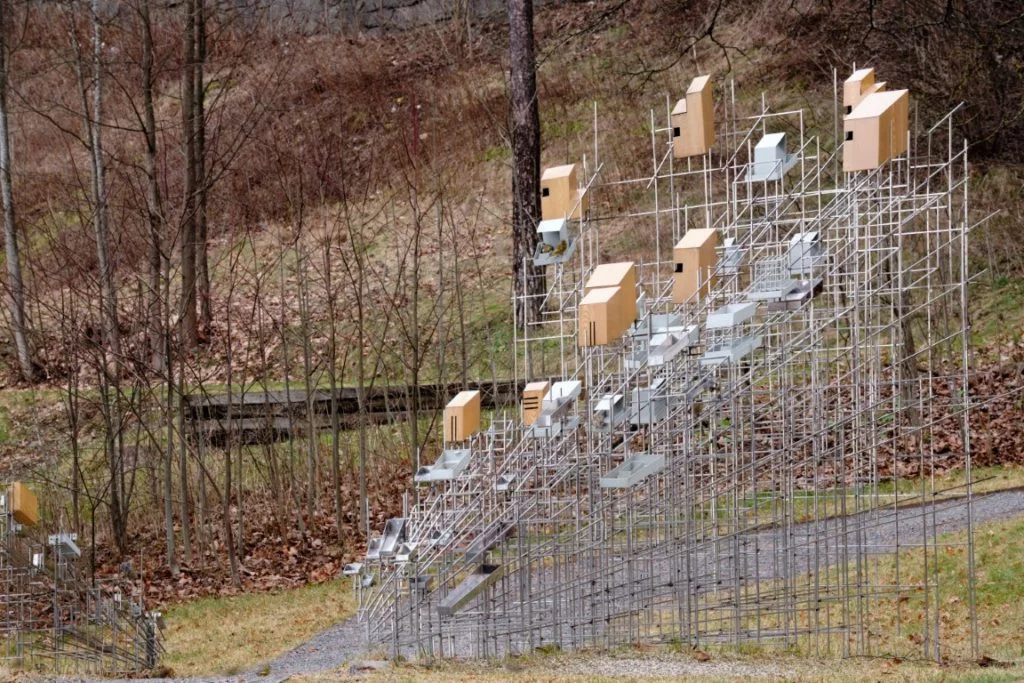
We can see this with contemporary land artists, like Robert Smithson, who use the geology of the land as a medium, Sarah Sze creates multimedia landscapes from everything from steel to archival prints, and Jenny Holzer uses text to play with notions of advertisement and illuminated displays, and these are only a microscopic view of the countless approaches these artists engage in.
These factors allow Contemporary Art to defy a singular definition. It embodies a large pool of artists, working with an innovative array of mediums, countless different themes, and continually reinventing approaches to style. But how did we reach a point where artists possessed such uninhibited artistic freedoms in their practice? To better understand, we need to take a look at Contemporary Art’s predecessor, Modern Art.
What is the Difference Between Contemporary and Modern Art?
Now, let’s break down the dividing line between Modern Art and Contemporary Art by looking at some key elements.
Contemporary Art
- Most often considered from the 1960s through the present day
- Incorporation of non-traditional mediums like digital media, performance, and installation
- Does not adhere to an evolution of movements, but artists adapting to thematerials and subjects of their time
- Increasing departure from aesthetic beauty to focus on the conceptual framework
Modern Art
- The period of time from the 1880s through the 1960s
- Primarily focused on the traditional mediums of painting and sculpture
- Consists of an evolution of movements and styles such as Impressionism, Cubism, Surrealism, amongst others
- A rejection of traditional aesthetic beauty to force viewers to reconsider the experience of art
To explain a bit further, Modern Art was a revolution against all previously accepted forms of art. The Impressionists at the end of the 19th century rebelled against how we perceive not only art but the world around us. This gave way to Post-Impressionism, Cubism, Dada, and Surrealism. While Modern Art was broken down into schools and movements, Contemporary Art constantly adapts and changes its approaches to medium and theme with no concise movement.
Appropriation artists in the 1980s broke down ideas of ownership through claiming objects and even the art of other artists as their own. In response to the rise of computers in the 1990s, a field of Digital Art emerged incorporating technology as a medium to reflect the human relationship to the virtual worlds. In the 2000s, some who practiced street art and graffiti found themselves elevated to the status of Urban Art.
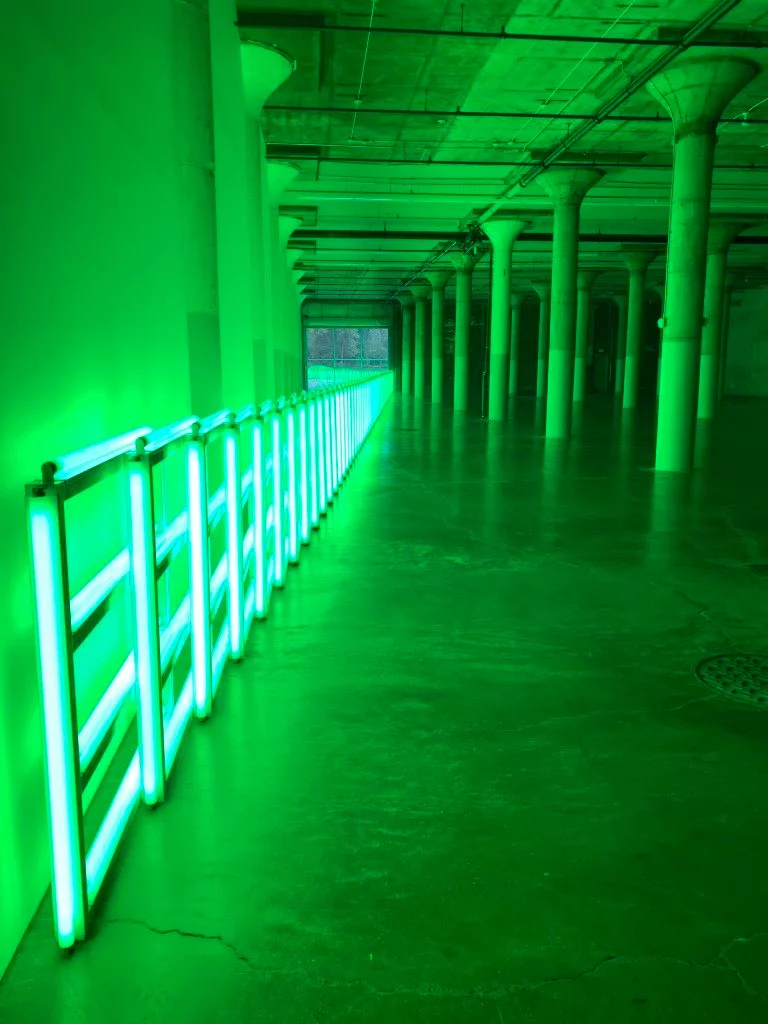
These differences led to the experience of art for the viewer to change. Yes, many Modern Art movements incorporated an experiential element; the neon sculptural works of Dan Flavin transform a space and the immense color fields of Mark Rothko evoke psychological emotions. Contemporary Art takes this a step further.
Installation artists, like the Infinity Rooms of Yayoi Kusama, allow a viewer to enter a work of art immersed in an entirely new world. New mediums such as Social Practice transform the participation of the viewer into the medium itself, as seen with the exploration into cultural identity and community with Rirkrit Tiravanija’s “Pad Thai” and “Free”. Contemporary Art breaks boundaries on an entirely new level beyond what the founders of the Modern Art movements could have ever dreamt possible.
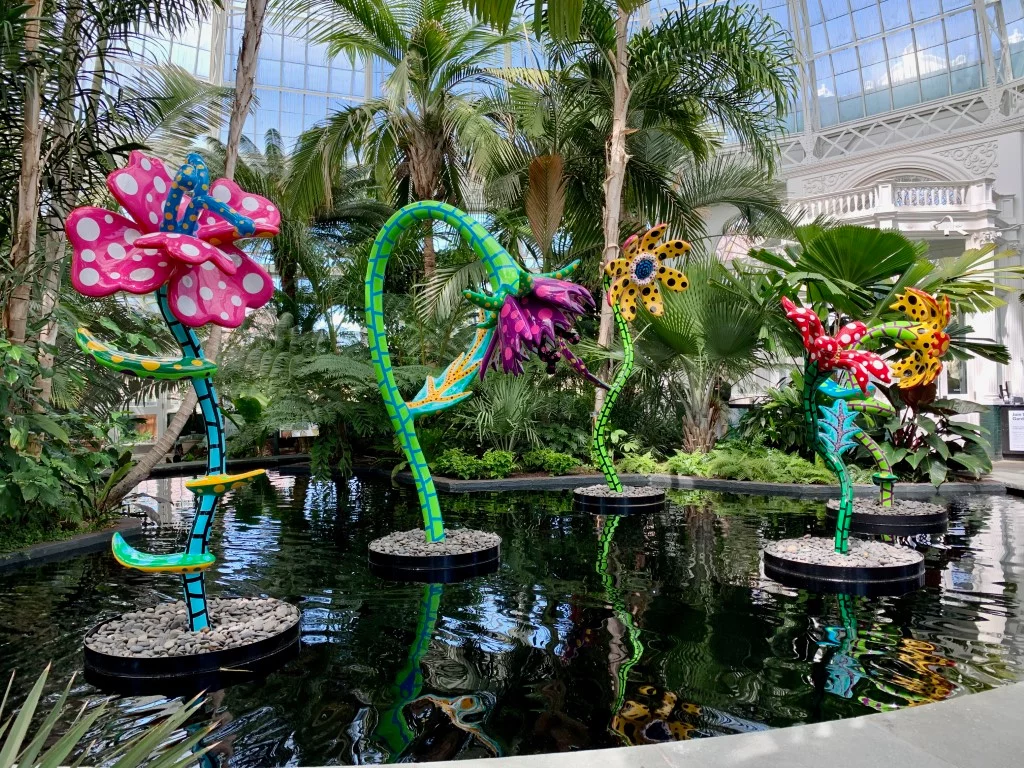
Who are the Top Contemporary Artists and Who are the Famous Modern Painters?
Let’s take a look at some notable artists you may recognize to help understand these differences.
Contemporary Art
- Jeff Koons // Conceptual and Pop Art
- Damien Hirst // Conceptual Art and the Young British Artists Movement
- Jean-Michel Basquiat // Neo-Expressionism and Primitivism
- Cindy Sherman // Appropriation Art
- Yayoi Kusama // Conceptual, Environmental, and Feminist Art
- Banksy // Urban or Street Art
- Richard Prince // Appropriation Art and The Pictures Generation
- Kara Walker // Conceptual and Critical Race Theory Art
- Marina Abramovic // Conceptual and Performance Art
- Barbara Kruger // Conceptual and Postmodern Art
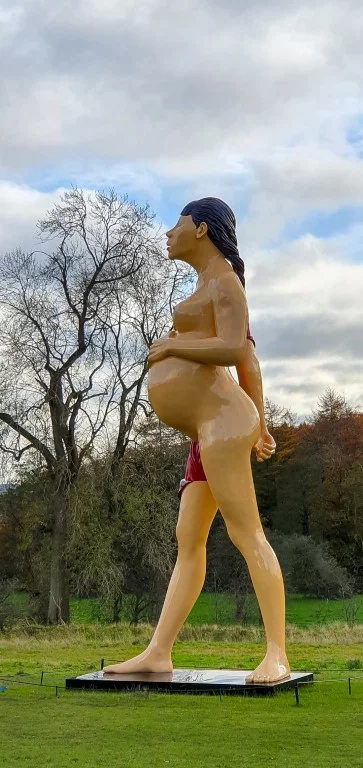
Modern Art
- Pablo Picasso // Cubism
- Vincent Van Gogh // Post-Impressionism
- Salvador Dali // Surrealism
- Henri Matisse // Fauvism
- Andy Warhol // PopArt
- Claude Monet // Impressionism
- Georgia O’Keeffe // American Modernism
- Jackson Pollock // Abstract Expressionism
- Frida Kahlo // Magic Realism
- Edgar Degas //Impressionism
The Endless Possibilities of Contemporary Art
Contemporary Art is the epitome of the art of today. It allows each artist the ability to create with whatever they want and about whatever they want regardless of how major art institutions attempt to limit art’s definition. Contemporary Art is a groundbreaking disruption to the notion of what art is supposed to be. Whether it be a large-scale site-specific installation, an NFT artwork, a public art mural by a graffiti artist, or the interactions of a community coming together, it can all be art of the contemporary. Contemporary Art is the freedom to make, express, and create a conversation without limits.
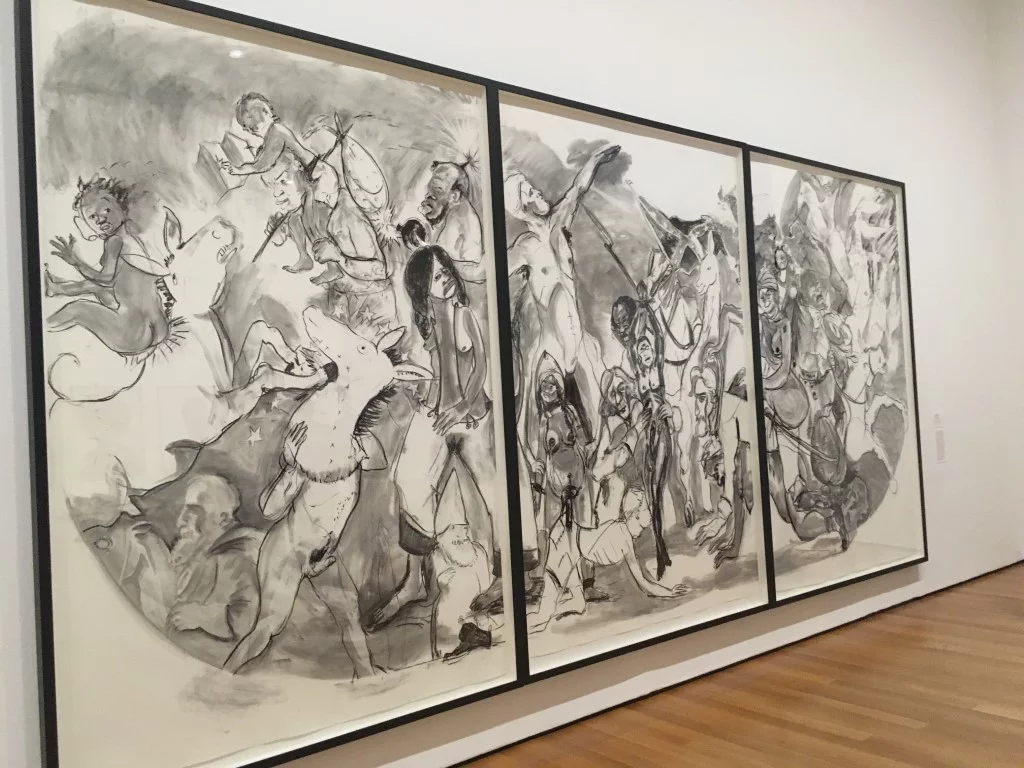
Further Reading
- Our own article on how COVID has changed the art world covering contemporary artists
- Art Terms provided by the Tate Museum in London
- Art 21 is one of the best resources for learning more about specific contemporary artists, with breakdowns of exhibitions, interviews with the artists, and more!
- If you are looking to read more into themes of contemporary art, Whitechapel Presshas an extraordinary collection of books entitled “Documents of Contemporary Art”

